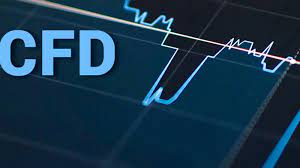
The Essentials of CFDs: What Every Trader Should Understand
Contracts for Difference (CFDs) have gained significant popularity among traders due to their versatility and accessibility. But what exactly are CFDs, and why are so many traders drawn to them? If you’re considering entering the world of what is cfds understanding their fundamentals is critical for success.
What Are CFDs?
CFDs, or Contracts for Difference, are financial derivatives that allow traders to speculate on the price movement of various financial instruments without owning the underlying asset. Unlike traditional investments, CFDs function as an agreement between a trader and a broker to exchange the difference in an asset’s price from when the contract is opened to when it is closed.
With CFDs, trading is available on a diverse range of markets, including forex, stocks, indices, commodities, and more. This wide selection and the potential to trade both rising and falling markets amplify their appeal to modern traders.
Key Features of CFD Trading
1. Leverage
One of the most notable aspects of CFDs is leverage. When trading CFDs, you can control a large market position while committing only a fraction of the total value as margin. For example, using a 10:1 leverage ratio, a trader could control a $10,000 position with just $1,000. While leverage amplifies potential profits, it’s important to remember that it also magnifies losses, making risk management essential.
2. Ability to Go Long or Short
CFDs allow traders to profit from price movements in either direction. If you anticipate prices will rise, you can “go long” by opening a buy position. Conversely, if you predict falling prices, you can “go short” by selling. This two-way trading potential makes CFDs particularly attractive, especially during volatile market conditions.
3. No Ownership of Underlying Assets
Since CFDs operate as contracts, traders never physically own the assets they are trading. This makes CFDs more affordable and simpler compared to investing directly in stocks or commodities, as there are no additional costs like stamp duty or delivery charges.
Risks and Considerations
While CFDs hold great potential, they also carry significant risks. High leverage can lead to substantial losses if the market moves against you. Additionally, fees such as overnight financing or spreads can eat into returns. It’s crucial for traders to understand these factors and use tools like stop-loss orders to limit potential damage.
Final Thoughts
CFDs represent a dynamic and flexible trading tool for those looking to diversify their portfolios or explore global markets. However, comprehensive research, effective risk management, and a solid trading strategy are essential to succeed in this fast-paced trading environment. Whether you’re new to trading or looking to expand your horizons, understanding the essentials of CFDs is your first step toward informed and confident trading decisions.